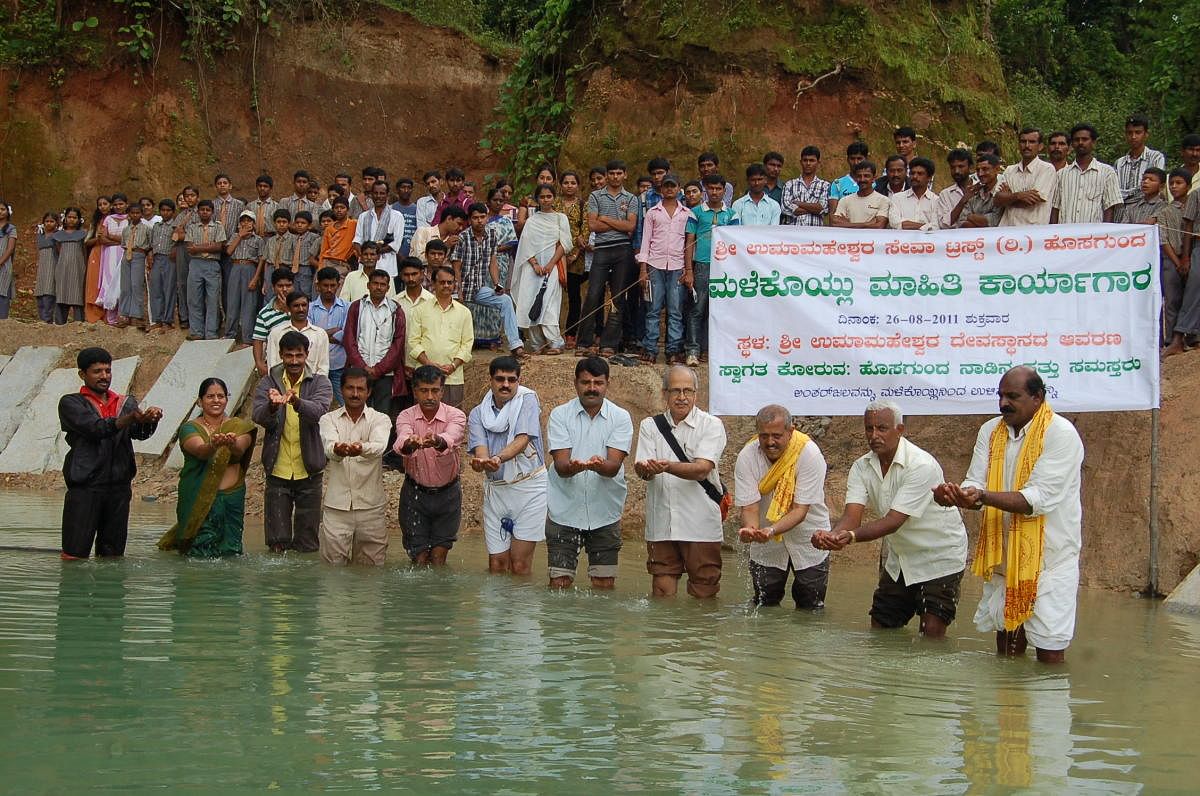Revitalising a sacred grove





Sacred groves or the Devarakadus which are found in different parts of the state have both environmental and religious significance. They are an abode of rich biodiversity, and the spiritual association traditionally forbids people from removing even a twig from the grove. However, in the last few decades, most of the sacred groves have lost their old glory due to human encroachment.
Hosagunda village near Sagar town in Shivamogga district has one such pristine patch. Spread over 600 acres, the forest cover nurtures 360 species of plants. This sacred grove is also an example of how villagers can become changemakers.
In the 1990s, a few villagers came forward to protect this untouched forest patch from exploitation. Though people believed that this is a sacred grove, there was no official declaration. The villagers put pressure on the administration to declare the forest patch as a sacred grove and recognise their participatory efforts in securing the grove. The once-neglected patch was officially declared as a sacred grove in 2009.
Every year, villagers come together to plant a variety of species to maintain the thick forest cover and have adopted water harvesting methods to retain the moisture level in the forest patch.
Royal connection
This village was the capital of Hosagunda kings from the 11th to the 13th century. After the downfall of Hosagunda dynasty, villagers migrated to different places abandoning the temples, and other buildings including the sacred grove.
The work towards conserving the sacred groves of Hosagunda got a boost by CMN Shastry and Shobha Shastry couple in 1991. A decade later, the couple formed Sri Uma Maheshwara Seva Trust to restore the ancient temples of Hosagunda. Along with temple conservation, the trust had taken up conservation of the forest surrounding the temple sites. With the support of the trust, environmentalists and the members of the local Village Forest Committee are now able to conserve large tracts of forest land around Hosagunda. According to a study conducted by the students of Botany Department of Kuvempu University, around 360 species of plants are found in this sacred grove. They have also identified a 650-year-old mango tree in this forest.
The villagers and the trust drafted a five-year plan in 2007 towards water and plant management. The trust identified 108 varieties of endangered species with the help of agricultural scientists working in different research institutes across the country. Members of the trust travelled across the country to collect identified species.
“Every year, villagers plant 108 saplings from 11 different types of endangered species in this sacred forest. We continued this programme for five years, thus planting 5,940 saplings,’’ says CMN Shastry. This programme involved villagers, environmentalists and students.
Besides, the villagers have also worked towards improving the water bodies in the forest. Under the guidance of water resource management experts, the villagers have adopted rainwater harvesting methods, which is another agenda under the five-year plan. “Nearly 5,000 rainwater harvesting pits have been dug inside the forest to conserve water. Check dams are constructed to enable a smooth flow of water during the monsoons. The plan has brought good results in the groundwater table in and around Hosagunda,’’ says Shastry. Umesh Adiga, another villager, says, “Earlier water used to dry up early, despite desilting two lakes of the village. Now, we are able to grow two crops in a year.’’ Trust organises special workshops on water resource management and rainwater harvesting at regular intervals.
New heights
Now the villagers are concentrating on managing the development works sustainably. Every year, villagers and college students desilt rainwater harvesting structures and plant a new sapling wherever a plant is dead.
In March, the trust made an agreement with Deendayal Research Institute, New Delhi, which conducts traditional wisdom of water regeneration programme (Jalasamskriti). A workshop was organised in and around Hosagunda village by experts and scientists from this institute to create awareness among villagers and students about water regeneration programme using traditional techniques.
Deccan Herald is on WhatsApp Channels| Join now for Breaking News & Editor's Picks